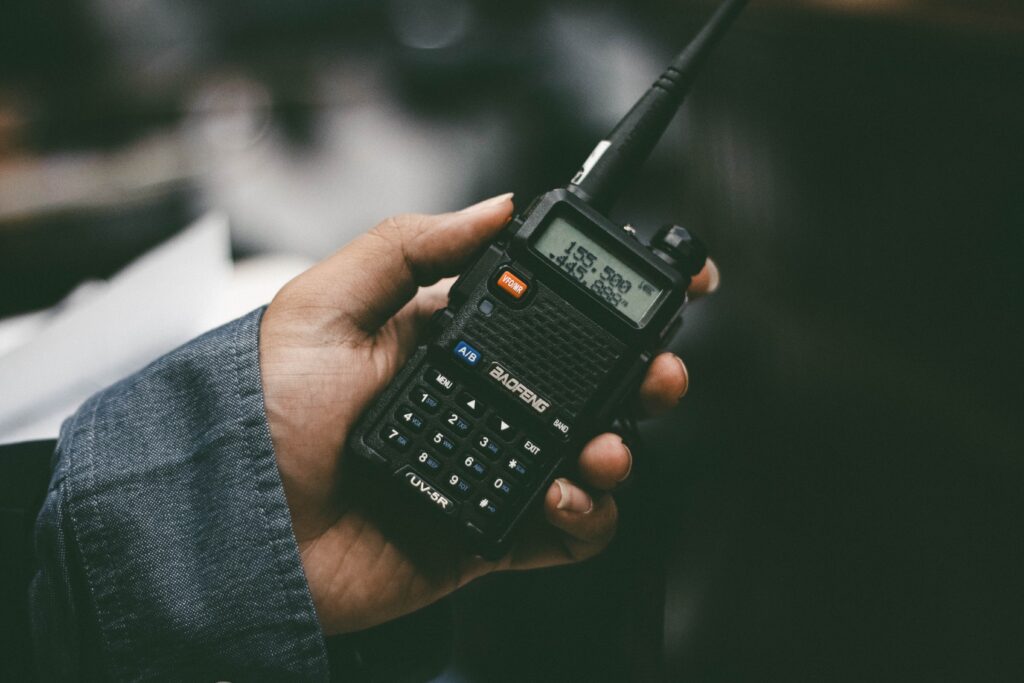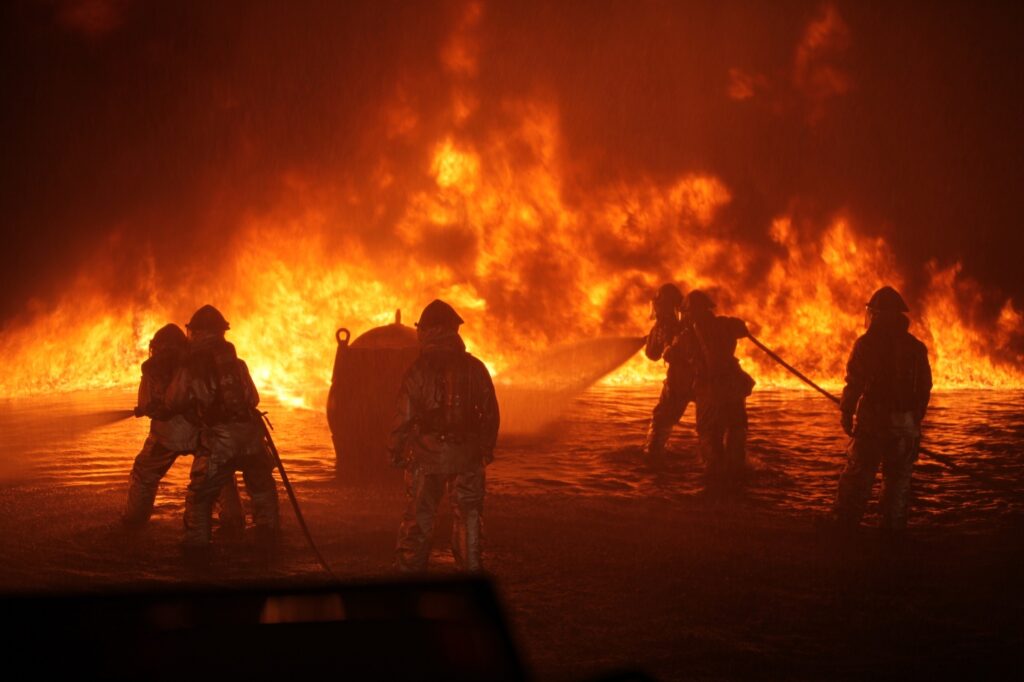In today’s world, it is essential to have effective emergency communication systems in place.
This article will discuss the importance of staying connected during a crisis and the various strategies that can be employed to ensure continuous communication channels remain open.
In times of turmoil, being able to communicate with loved ones quickly and effectively is more important than ever before.
It is necessary for individuals to understand how different methods of communication work together in order to create an efficient system that allows people to stay connected even when they are separated by distance or other obstacles.

By understanding available options, such as two-way radios, text messaging services and social media platforms, it becomes possible for those affected by a crisis situation to send out vital updates and receive assurance from others in an expedient manner.
Understanding The Importance Of Communication
In times of crisis, emergency communication is essential to staying connected. It allows individuals and groups to remain informed in dangerous situations, enabling them to make the best decisions for their safety and well-being.
When developing a plan for effective communication during an emergency, it is important to consider the various resources available. Cell phones are perhaps the most familiar device used for emergency communication. However, they only work when there is cell phone service or Wi-Fi access. In addition, other technologies such as satellite messaging systems can be extremely useful in areas with no cellular coverage. Satellite technology enables users to send text messages from any location on earth with a clear view of the sky by using low power transmitters mounted on small satellites orbiting the planet.
Radio devices also play an integral role in providing reliable communications in emergencies. Amateur radio operators have long been relied upon by first responders and public safety professionals alike due to their ability to communicate over large distances without relying on infrastructure or services that may become unreliable during crises. This makes radios invaluable tools for notifying people of danger or warning them how to stay safe during disasters like floods, fires, earthquakes, etc.
Establishing An Emergency Communication Plan
Establishing an Emergency Communication Plan is essential for staying connected during a crisis. It requires the coordination and commitment of all parties involved to ensure that communication remains open, reliable and secure.
The most important part of any emergency communication plan is having clear roles outlined for each participant. The person in charge must be able to communicate expectations clearly and provide resources as needed. A designated contact should also be appointed who can easily reach out with updates or instructions when necessary. Additionally, it’s important that everyone understands how to use the tools available for communicating – such as email, phone calls, texting, video conferencing etc.
Finally, developing strategies on how best to stay informed during a crisis is key. This includes:
1) Learning about potential risks associated with the area where you are located;
2) Familiarizing yourself with local alert systems;
3) Staying up-to-date on news sources related to relevant topics (e.g., weather alerts).
By following these steps, individuals will have a greater chance of staying connected during an emergency situation while keeping their safety intact at all times.
Utilizing Traditional Communication Channels
In times of crisis, traditional communication channels remain essential for staying connected. These include landline phones, television and radio broadcasts, as well as postal services.
Landlines enable fast and reliable connections with family and friends in cases where the cellular network is not available; however, their usage has significantly decreased since cellphones became more accessible. Television and radio broadcasts remain popular sources of news and entertainment despite the proliferation of streaming services online. Furthermore, postal services allow people to send important documents across long distances without relying on electronic means of communication such as email or faxing.
| Communication Channel | Advantages | Disadvantages |
| Landlines | Fast and reliable connections | Decreasing usage |
| TV/Radio Broadcasts | Popular sources of news | Limited interaction with audience |
| Postal Services | Long distance exchange | Slow delivery times |
Despite certain disadvantages associated with each channel, they can be invaluable when other forms of digital communication are not available during a crisis. Traditional communication methods continue to play an integral part in emergency situations worldwide even as technology advances rapidly. As shown by the table above, these old-school methods have both advantages and disadvantages that should be taken into consideration before using them for connecting with loved ones during hard times.
Exploring Advanced Technology Solutions
- Automated emergency alerts are an important part of emergency communication in order to effectively alert the public of any immediate threats.
- Security systems integration is critical for providing up-to-date information on the status of critical infrastructure during a crisis.
- Network connectivity solutions are necessary to ensure that emergency personnel have the ability to stay connected during a crisis.
- Wireless and satellite systems are two common options for providing communication during an emergency.
- Other advanced technology solutions such as mesh networks and tactical communication systems can also be used to help ensure reliable communication during an emergency.
- The use of these technologies can help to ensure that emergency personnel remain connected and able to respond to any crisis quickly and effectively.
Automated Emergency Alerts
In recent times, automated emergency alert systems have become increasingly prevalent as a means of providing rapid and accurate communication in the event of an emergency. Automated emergency alerts provide notifications to individuals through broadcast media such as radio, television, or mobile devices using wireless technologies. These messages are highly targeted and deliver specific information about any threats that may be present in the vicinity.
Additionally, they can also inform people about available resources for their safety and location-specific evacuation orders if needed. Alerts are typically sent out by local authorities and allow citizens to stay informed during crisis situations.
The benefits of automated emergency alert systems include speed of delivery, accuracy of information provided, cost effectiveness relative to other forms of communication, scalability across different regions, and near universal access due to its reliance on existing infrastructure. Furthermore, they offer a level of reliability not often achieved with manual messaging methods which can be hampered by human error or interference from environmental conditions such as inclement weather.
As such these systems serve as an important tool in informing the public during emergencies while helping them maintain their sense of security and freedom even under adverse circumstances.
Automated emergency alert systems offer tremendous potential for improving our ability to quickly respond to critical incidents like natural disasters or acts of terrorism – allowing us to better protect both lives and property within affected areas. Such solutions represent a great opportunity for governments and organizations alike to ensure that vital information reaches those who need it most when time is of the essence.
Security Systems Integration
Security systems integration is a key component of advanced technology solutions in the field of emergency communication.
The ability to link various security platforms together enables organizations to better protect their assets and personnel by providing real-time situational awareness with respect to any potential threats or risks.
Through this unified system, stakeholders can quickly respond to events as they unfold while ensuring that the appropriate resources are allocated accordingly.
This leads to improved decision making capabilities based on up-to-date information which can help prevent costly losses or delays due to inadequate response times.
Moreover, it also serves as an effective deterrent against malicious actors who may attempt to exploit weaknesses within a network.
By leveraging secure authentication protocols, access control lists, and intrusion detection algorithms these systems provide an additional layer of protection that reinforces existing safety measures in place.
As such, integrating security systems into our emergency communication infrastructure not only strengthens overall preparedness but also offers peace of mind knowing that our freedom remains protected even under difficult circumstances.
Network Connectivity Solutions
Network connectivity solutions allow for organizations to further build upon their emergency communication infrastructure. Through the use of various technologies such as Wi-Fi, Bluetooth and cellular networks, it is possible to seamlessly integrate disparate systems into a unified network which can provide greater situational awareness in the event of an emergency.
By leveraging these wireless connections, stakeholders can remain connected regardless of their physical location or access to traditional wired services; this allows organizations to better respond quickly and effectively while providing real-time updates on potential risks or threats.
Furthermore, high throughput rates enable data to be transmitted faster than ever before which helps ensure that information remains secure and reliable even when facing challenging conditions. As such, incorporating advanced networking capabilities serves as an important component of any comprehensive emergency communication system and provides assurance that our freedom will continue to be safeguarded during times of crisis.
Making Use Of Social Media Platforms
The utilization of social media platforms can be incredibly beneficial in emergency communication. In an age where information is disseminated and shared quickly, these platforms allow for a more direct and personal form of connection between those affected by the crisis. As such, understanding how to use this technology effectively can help people stay connected during tumultuous times.
In order to make use of social media effectively:
- Develop a plan for managing content that includes being intentional about what you post as well as monitoring online activity to keep track of important news and updates related to the situation at hand.
- Utilize all available tools, such as creating polls or surveys, setting up group chats or livestreams, and scheduling video calls so everyone stays updated on changes within their community.
Additionally, it’s important to remember that much like any other form of communication, there are certain etiquette rules people should follow when using social media during a crisis. Being mindful of your language and aware of potential triggers is essential in maintaining respectful discourse throughout the conversation.
Additionally, promoting accurate information is key – sharing false reports can only lead to further confusion and chaos among those impacted by the event.
For effective emergency communication through social media platforms one must ensure they create a thoughtful plan for engaging with content while also following proper etiquette guidelines that promote respectfulness and accuracy in conversations taking place virtually. With these steps taken into account individuals will have access to quality resources needed to stay informed during periods of uncertainty.
Ensuring Effective Crisis Communication
Social media platforms can be invaluable tools in helping to stay connected during a crisis. The immediacy and reach of these services allows people to quickly share information, both with friends, family and those outside the local area who are affected by the same crisis.
However, it is important that emergency communication remains effective so that messages get through accurately and effectively. The most important factor for ensuring effective crisis communication is clarity. Messages should be concise yet include all relevant details needed for recipients to understand what action needs to be taken or what advice they need to follow.
In addition, there needs to be consistency between messages from different sources; if multiple organizations are involved then everyone must use the same language when communicating about the crisis. This helps prevent confusion amongst people trying to assess which pieces of advice are reliable and trustworthy.
It is also essential that critical communications do not become lost amidst other chatter on social media networks. To ensure this does not happen, any official updates should always come directly from verified accounts belonging to an authoritative source such as an emergency response team or government agency.
People may also find comfort in being able to communicate directly with trusted contacts during a time of anxiety and uncertainty; allowing them access to personalized support or guidance at such times can help maintain morale and keep spirits up even under difficult circumstances.
Frequently Asked Questions
What Are The Best Ways To Keep Family And Friends Informed During A Crisis?
In times of crisis, it is important to keep family and friends informed. Keeping loved ones up to date with the latest news can help them stay safe and prepared.
Communication options include traditional methods such as phone calls or text messages, or newer technologies like social media platforms or video conferencing services.
It is also helpful to have a plan for how communication will be facilitated if cellular service becomes unavailable. A well-thought out backup plan that includes alternative ways of reaching out can ensure everyone stays connected even in difficult times.
How Can I Best Prepare For An Emergency Communication Plan?
When preparing for an emergency communication plan, there are several steps one should take.
It is important to create a list of contacts and emails that can be reached during a crisis as well as back-up plans in case certain methods of communication become unavailable.
Additionally, it may be helpful to practice sending messages through various platforms so that if the need arises, you know how best to send your message quickly and effectively.
Finally, having access to multiple devices such as cell phones, tablets, or computers with internet connection can help ensure that you have reliable access to communications during an emergency situation.
What Type Of Technology Should I Use In A Crisis Situation?
In a crisis situation, the choice of technology to use is critical.
It should be accessible and reliable, but also secure enough that confidential information remains private.
Options such as cloud-based systems are ideal because they can link multiple users in real time while protecting data from potential breaches.
Additionally, technologies that allow for two-way communication like text messaging or instant messaging apps make it easier to stay connected with family and colleagues during an emergency.
How Can I Ensure That My Messages Will Be Heard During A Crisis?
In order to ensure that messages will be heard during a crisis, it is important to use reliable forms of communication.
The best approach is to combine both digital and non-digital methods.
Digital solutions such as text messaging can provide an immediate way for information to be exchanged quickly in real time, while the addition of physical mail or other offline delivery systems can help ensure that any message sent will reach its intended recipient even if there are power outages or internet disruptions.
Furthermore, utilizing multiple channels of communication allows one’s message to have greater visibility and reach more people with less effort.
What Are The Advantages Of Using Social Media In An Emergency?
Social media has become an essential tool in emergency communication due to its ability to reach large amounts of people simultaneously. This can help alert individuals of impending danger and provide updated information about the crisis situation.
Additionally, it allows for direct two-way communication with public officials during a crisis which can be beneficial as they are able to distribute more accurate information while also being able to receive feedback from citizens.
Social media offers increased access to resources such as medical advice and shelters that may not be available through traditional means of communication.
Furthermore, it enables users to connect on a personal level by facilitating conversations between family members who have been displaced or lost contact during the disaster response.
Conclusion
In conclusion, it is essential to make sure that family and friends are kept informed during a crisis. To do this effectively, an emergency communication plan should be established in advance.
Technology such as smartphones, social media apps, and text messaging can be used to quickly disseminate information. When using these forms of communication, it is important that messages have the attention-grabbing elements needed for them to stand out in times of distress.
Additionally, utilizing social media platforms has the added advantage of allowing individuals from all over the world to come together in support and solidarity during difficult situations.
As technology continues to improve and evolve, so too does our ability to communicate during emergencies – making staying connected easier than ever before.









